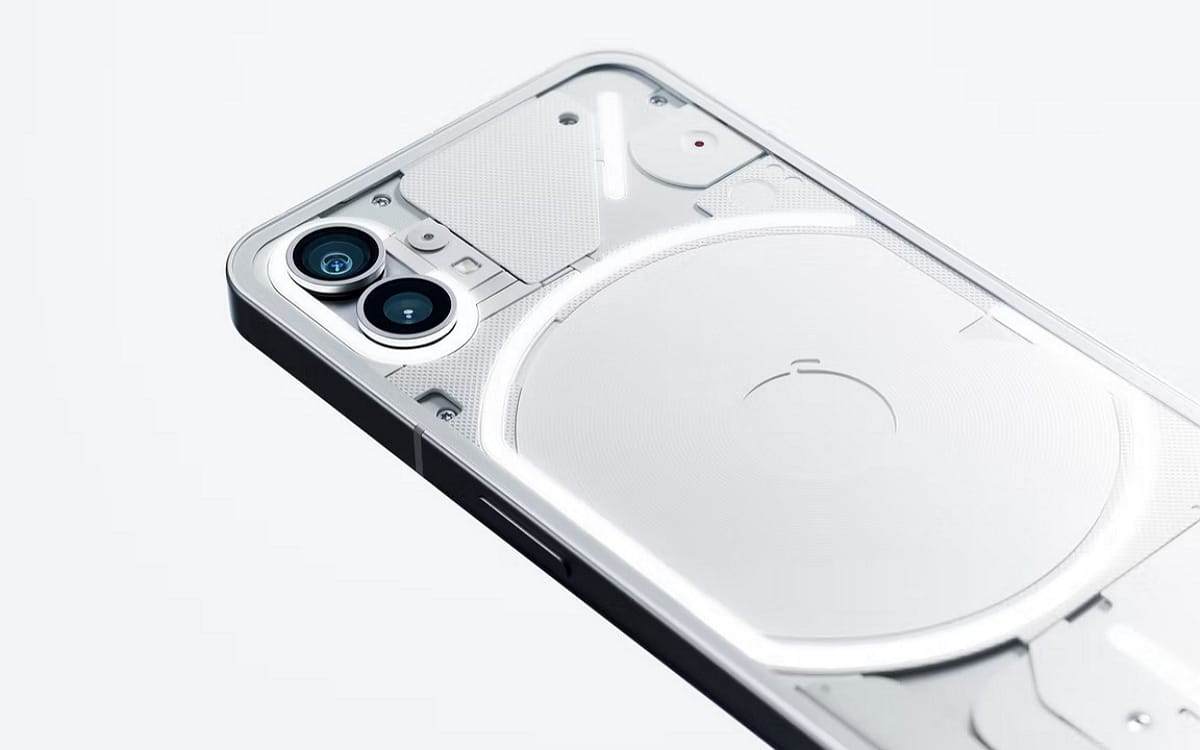Nothing Phone 1 Review
The Phone 1 by ‘Nothing’ is the second physical product and first mobile phone, the first being, 2021’s Ear 1 true wireless earbuds. The company has shown quite an improvement as compared to its previous product with unique features such as transparent rear and the Glyph Interface lighting is unlike anything else on the market. Let’s have a look at all the pros and cons of having this phone.
Also Read: Xiaomi Poco M4 Pro 5G Review
Nothing Phone 1 specs at a glance:
Body: 159.2×75.8×8.3mm, 194g; Glass front (Gorilla Glass 5), glass back (Gorilla Glass 5), aluminum frame; Multiple LED lights on the back (notifications, charging progress, camera fill light), Blinking red light on the back (video recording indicator), IP53 – splash, water and dust resistant.
Display: 6.55″ OLED, 1B colors, 120Hz, HDR10+, 500 nits (typ), 1200 nits (peak), 1080x2400px resolution, 20:9 aspect ratio, 402ppi.
Chipset: Qualcomm SM7325-AE Snapdragon 778G+ 5G (6 nm): Octa-core (1×2.5 GHz Cortex-A78 & 3×2.4 GHz Cortex-A78 & 4×1.8 GHz Cortex-A55); Adreno 642L.
Memory: 128GB 8GB RAM, 256GB 8GB RAM, 256GB 12GB RAM; UFS 3.1.
OS/Software: Android 12, Nothing OS.
Rear camera: Wide (main): 50 MP, f/1.9, 24mm, 1/1.56″, 1.0µm, PDAF, OIS; Ultra-wide angle: 50 MP, f/2.2, 114˚, 1/2.76″, 0.64µm, PDAF.
Front camera: 16 MP, f/2.5, (wide), 1/3.1″, 1.0µm.
Video capture: Rear camera: 4K@30fps, 1080p@30/60fps, gyro-EIS, live HDR; Front camera: 1080p@30fps.
Battery: 4500mAh; Fast charging 33W, 50% in 30 min, 100% in 70 min (advertised), Wireless charging 15W, Reverse wireless charging 5W, Power Delivery 3.0, Quick Charge 4.0.
Misc: Fingerprint reader (under display, optical); NFC; stereo speakers.
Price and availability
Nothing Phone (1) was released on July 16, 2022. It is available in three different variants with varying prices with the 8GB RAM and 128GB internal storage variant being available at Rs 118,450/-, 8GB RAM and 256GB internal storage variant available at Rs 126,270/- and last one of 12GB RAM and 256GB internal storage variant at Rs 137,770/-. All variants are available in white and black colour.
Design
The overall design is similar to Apple’s iPhone 12, because of the Phone 1’s metal frame with straight sides, rounded corners, flat front and back, and dual rear camera arrangement. The functional exposed parts in Nothing underneath is stylishly satisfying. The weight f the phone is 193.5g which feels lighter than the build.
Rear: The most interesting and unique feature of Nothing with a clear Gorilla Glass 5 back, on which are the shadows that emerge over and under the layers of components with different textures, screws and ribbon cables, which makes it a fascinating device to look at.
Controls: On the right side of the frame is the power key and on the left are the two volume controls which are large, easy to reach and soft to click.
Resistance: It has IP53-certification, which means that the phone can bear light drizzle and must prevent dust from entering in clear back glass. The screen also has pre-fitted plastic screen protector
Glyph Interface:
The transparent back of Nothing features unique Glyph Interface, which is a series of 900 white LEDs organized across the phone’s rear in a particular pattern around the edge of elements like the rear camera module and wireless charging coil, and each segmented glyph can illuminate separately. You can also customize what the glyphs react to, they can also act as a battery charging indicator for both wired and reverse wireless charging and it also serves as a soft light while shooting video or portrait mode shots, instead of the camera’s single LED flash.
Display
Nothing Phone 1 has 6.55-inch Full HD+ OLED panel, a 120Hz high refresh rate, along with HDR10+ compatibility and 10-bit color support.
Sensors: At the top-left corner of the screen is the punch-hole front-facing camera and an optical in-display fingerprint sensor is at the bottom edge of the panel, which remains faintly lit when rest of the display is off, which is quite convenient to unlock without turning on the display.
Brightness: The Full HD+ resolution offers a perfectly sharp image with great video streaming and the peak brightness is 500nits that is fine for all scenarios even in direct sunlight where visibility suffers mostly.
OLED: The utilization of OLED tech guarantees an energetic picture, matched to two variety profiles: Alive (the default) and the more muffled and normal looking Standard; with a touch of additional fine-grain control, because of a variety temperature slider.
Refresh rate: A 120Hz dynamic refresh rate, matched with 240Hz touch response implies great gaming experience and phone usage. Refresh rate can automatically switch up and down in frequency (Hz) based on phone usage.
Cameras
Both rear cameras, primary and ultra-wide pack in the pixels at 50MP a piece while front cam is 16MP.The main 50MP camera uses Sony IMX766 sensor, supported by OIS (optical image stabilization) while the secondary 50MP Samsung JN1 ultrawide delivers a reasonable degree of consistency when switching between the two focal lengths.
Results: Main 50MP Sony sensor provides fine details, in addition to colors that fiddle, with uplifted immersion, resulting in Instagram friendly shots. The primary sensor closer shots are better than phone’s dedicated Macro shooting mode, which relies on ultra-wide. Ultrawide has visual downgrade against the main camera, with weaker and muted colors, muddier details and narrower dynamic range. It still serves its purpose, with a nice wide 114-degree field of view that that offers you more chances to be imaginative.
Glyph Interface: Using the Glyph Interface light as an alternate for phone’s single LED flash, gives better results when subjects are nearer the camera because it has shorter throw.
Front Cam: The selfies are fine with portrait mode, adding a pleasant degree of polish to photographs that suggest they were taken on a more proficient camera than in reality.
Videos: As for video recording, the Phone 1 captures at up to 1080p / 60fps or 4K / 30fps through the rear sensors, with decent OIS (main sensor only) and EIS that does a great job.
Performance and software
Nothing utilizes two softwares Android 12 and Nothing OS. The later falls into a similar category of Motorola’s and Google’s own take on Android, with little adjustments that differentiate it.
Updates: It promises three years of OS updates and four years of security updates to Phone 1 owners; making the device that much more appealing in terms of both value for money and longevity.
Chipset: Nothing uses an older seventh-generation Qualcomm SoC: the Snapdragon 778G+.This comes paired with a base 8GB RAM, and can be upgraded to 12GB variant.
Performance: The benchmarking score is just 778G+ but it is more than enough for everything from split-screen multitasking to semi-casual gaming.
Battery and charging
Where the 778G+ tumbles down, is with battery life span. The Phone 1 packs a 4,500mAh battery, providing 18 hours of usage as claimed by Nothing. However, the Phone 1 continuously lasts around five hours of screen-on time, which is the bare minimum.
As for recharging, the Phone 1’s battery officially charges to 50% in 30 minutes with a compatible PD 3.0/Quick Charge 4.0-compliant adapter that meets the phone’s maximum fast-charging speed of 33W. Nothing offers its own 45W power adapter but it is not included in the box, you’ll only find a white USB-C to USB-C cable.







